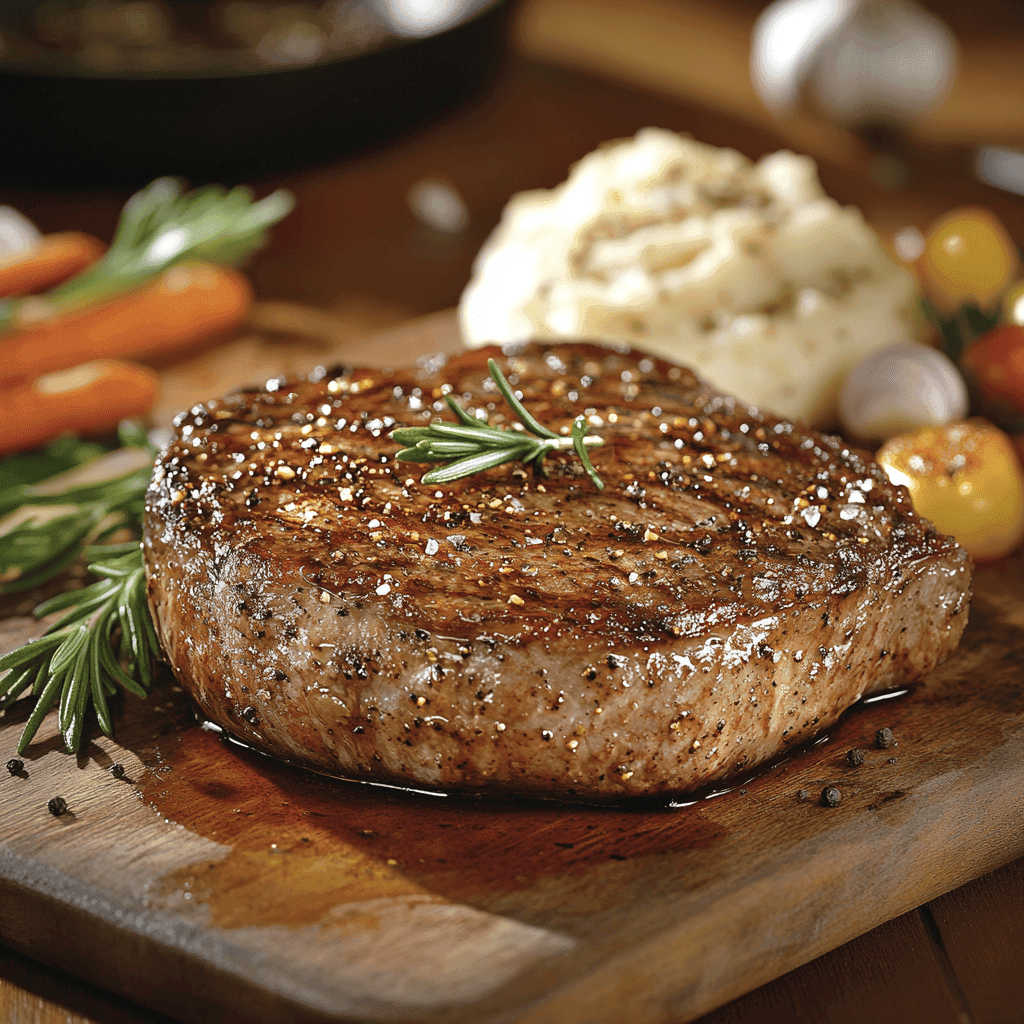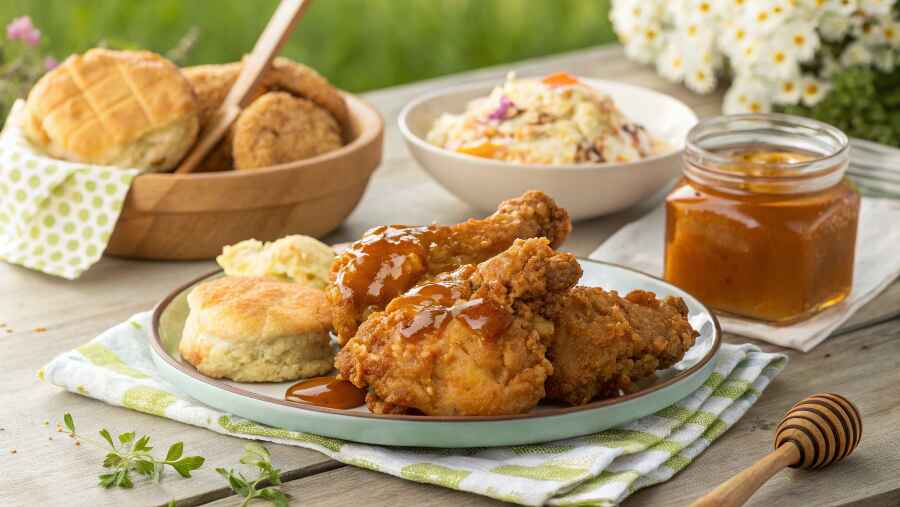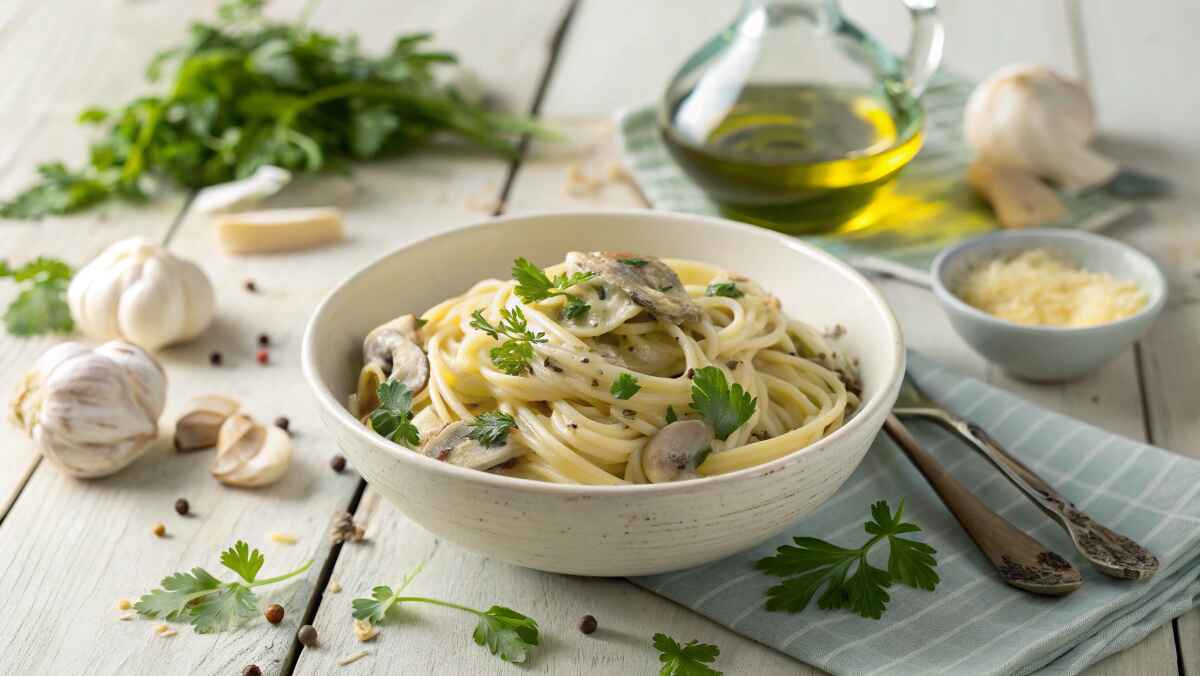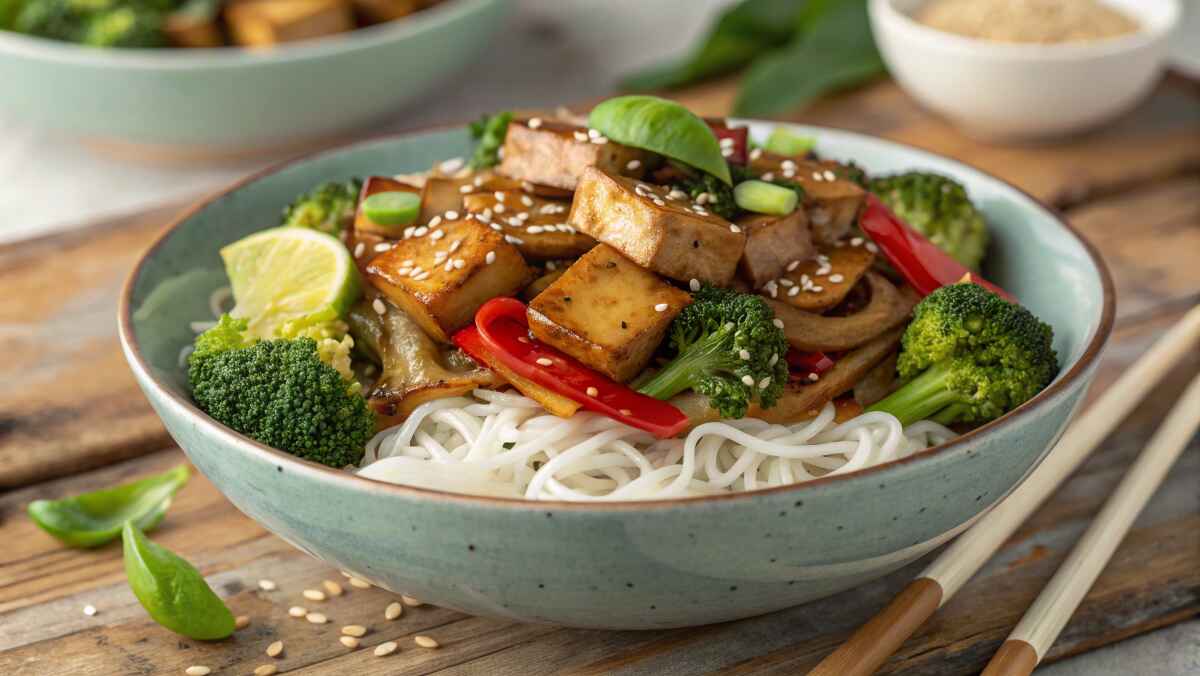When it comes to premium steak cuts, few can rival the bold flavors, rich marbling, and rustic appeal of the Cowboy Steak. This thick, bone-in ribeye is not just a meal—it’s an experience. Its generous size, dramatic presentation, and incredible depth of flavor make it a favorite among steak lovers, grill masters, and fine-dining enthusiasts alike.
But what does Cowboy Steak taste like? This is a question that piques the curiosity of both seasoned steak connoisseurs and those simply looking for an unforgettable dining experience. The answer lies in its exceptional marbling, juicy tenderness, and smoky, charred crust that comes alive when cooked to perfection.
In this guide, we’ll dive deep into the flavor profile, texture, best cooking methods, and ideal pairings for Cowboy Steak. Whether you’re grilling it over an open flame, searing it in a cast-iron skillet, or enjoying it with the perfect side dish, this post will give you everything you need to understand and appreciate the incredible taste of Cowboy Steak.
The Unique Flavor Profile of Cowboy Steak
Cowboy Steak has a flavor profile that sets it apart from other steak cuts. It combines deep, beefy richness with buttery tenderness and subtle smokiness, creating a taste that is both bold and refined. Here’s a detailed breakdown:
1. Rich, Beefy Intensity
The Cowboy Steak comes from the rib primal section of the cow, an area known for producing some of the most flavorful and tender cuts of beef. This area is not heavily worked, allowing the meat to develop rich marbling and a concentrated beef flavor. Each bite offers a savory depth that’s hard to match, making it a favorite among steak connoisseurs.
Compared to leaner cuts like filet mignon, the Cowboy Steak delivers a robust and satisfying taste that appeals to those who love the full flavor of beef.
2. Bone-In Flavor Enhancement
The bone is one of the defining features of a Cowboy Steak, and it plays a significant role in its flavor. As the steak cooks, the bone releases collagen and natural juices into the meat, adding a subtle earthy depth. This process, often referred to as the “bone-in effect,” creates a richer and more complex flavor than boneless cuts like traditional ribeye.
3. A Buttery and Luxurious Finish
The abundant marbling in a Cowboy Steak melts during cooking, coating the meat with fat and enhancing its tenderness. This gives the steak a luxurious, buttery mouthfeel that complements its bold beefiness. The melted fat also caramelizes on the surface, contributing to the steak’s rich, slightly sweet undertones.
4. Smoky and Charred Notes
Cooking techniques like grilling or pan-searing develop a flavorful crust on the exterior of the steak. This crust is created through the Maillard reaction, a chemical process that occurs when high heat is applied to proteins and sugars. The result is a smoky, caramelized flavor that enhances the steak’s natural beefiness.
The Perfect Texture of Cowboy Steak
Taste is only part of the equation. The texture of Cowboy Steak plays a critical role in the overall eating experience. Here’s what makes its texture special:
1. Juicy and Tender
Thanks to its high marbling, Cowboy Steak retains moisture during cooking, resulting in a juicy bite every time. When cooked to medium-rare or medium, the meat is tender without being mushy, providing the ideal balance of texture and flavor.
2. Balanced Contrast
The interior of the steak is buttery and tender, while the exterior develops a crispy, caramelized crust. This contrast creates a satisfying mouthfeel, with every bite offering a combination of soft and chewy textures.
3. Bone-In Portion
The meat closest to the bone is often the most tender and flavorful. This section is infused with juices and fat from the bone, creating a unique texture that is slightly softer than the rest of the steak.
How Cooking Methods Impact Flavor
The way you cook a Cowboy Steak significantly influences its taste. Let’s explore the most popular cooking techniques and how they enhance its flavor:
1. Grilling
Grilling is the classic method for cooking Cowboy Steak, imparting a smoky flavor that complements its rich beefiness. The high heat of the grill creates a perfectly seared crust, locking in juices while allowing the marbling to melt into the meat. Adding wood chips like hickory or mesquite can enhance the steak’s smoky profile.
For tips on grilling techniques, check out our guide to steak preparation.
2. Pan-Searing
Pan-searing in a cast-iron skillet creates an evenly caramelized crust that enhances the steak’s savory flavors. Adding garlic, butter, and fresh herbs like rosemary during the sear infuses the meat with additional layers of flavor, making it even more indulgent.
3. Reverse Searing
This technique involves slow-cooking the steak in the oven before finishing it with a high-heat sear. Reverse searing ensures even doneness throughout the steak while preserving its juices. The final sear creates a crispy crust, adding a smoky and slightly sweet flavor to the meat.
4. Smoking
Smoking a Cowboy Steak allows the flavors to develop slowly, resulting in a deeper, more complex taste. The use of wood chips like cherry or oak infuses the meat with subtle fruity or earthy undertones, enhancing its natural richness.
Flavor Pairings for Cowboy Steak
To fully appreciate the taste of Cowboy Steak, pair it with complementary flavors that enhance its boldness:
1. Side Dishes
- Mashed Potatoes: Creamy mashed potatoes balance the steak’s richness with their smooth, buttery texture. Learn more about potato pairings in our guide to mashed potato accompaniments.
- Roasted Vegetables: Sweet and caramelized vegetables like Brussels sprouts or carrots bring a touch of natural sweetness that contrasts beautifully with the steak’s savory notes.
- Grilled Asparagus: The earthy, slightly bitter flavor of asparagus enhances the meat’s boldness.
2. Sauces
- Chimichurri: This tangy and herbaceous sauce cuts through the richness of the meat, providing a refreshing contrast.
- Peppercorn Sauce: The spicy kick of peppercorn complements the steak’s savory flavors.
- Garlic Butter: Compound butter made with garlic and herbs enhances the steak’s buttery profile.
3. Beverages
- Red Wine: Bold wines like Cabernet Sauvignon or Malbec match the intensity of the steak.
- Craft Beer: Stouts or porters with roasted flavors complement the smokiness of grilled or smoked Cowboy Steak.
Why Cowboy Steak Stands Out
Cowboy Steak’s distinct flavor profile, combined with its luxurious texture and dramatic presentation, makes it a favorite for:
- Special Occasions: The impressive size and bold flavor make it ideal for celebrations or steak nights.
- Steak Enthusiasts: Those who love bold, beefy flavors will appreciate the depth and richness of Cowboy Steak.
- Versatile Cooking: Whether grilled, seared, or smoked, Cowboy Steak consistently delivers an unforgettable taste experience.
FAQs About Cowboy Steak Taste
1. How does Cowboy Steak differ from ribeye in flavor?
Cowboy Steak has a richer flavor due to its bone-in design and thicker cut, which enhances marbling and moisture retention.
2. Does the bone affect the flavor?
Yes, the bone adds depth and complexity by releasing collagen and juices during cooking.
3. What cooking method brings out the best flavor?
Grilling or smoking highlights the steak’s bold, smoky flavors, while pan-searing creates a caramelized crust.
4. Can Cowboy Steak be paired with bold flavors?
Absolutely! Pair it with bold sauces, roasted vegetables, and full-bodied wines for a complete flavor experience.
Cowboy Steak: A Bold and Unforgettable Steakhouse Classic
The Cowboy Steak offers a taste experience unlike any other. This thick, bone-in ribeye is prized for its deep, rich beefiness, buttery tenderness, and beautifully caramelized crust. Whether you’re a seasoned steak enthusiast or simply someone who appreciates a good cut of meat, the Cowboy Steak delivers flavor, texture, and presentation that stand out from the rest.
Why Cowboy Steak is a Must-Try Cut
✅ Unmatched Beefy Flavor – Thanks to its high marbling content, the Cowboy Steak offers a juicy, melt-in-your-mouth experience with every bite.
✅ Tender & Buttery Texture – Cut from the rib primal, this steak is naturally tender and succulent when cooked properly.
✅ Bone-In for Extra Flavor – The attached bone enhances the steak’s flavor and helps retain moisture, giving it that signature steakhouse taste.
✅ Perfect for Special Occasions – Whether it’s a celebration, date night, or weekend cookout, Cowboy Steak makes a bold and luxurious statement.
Mastering the Art of Cooking Cowboy Steak
To fully enjoy the bold flavors and luxurious texture of a Cowboy Steak, choosing the right cooking method is essential:
🔥 Grilled: Cooking over an open flame enhances the smoky, charred crust while keeping the interior juicy and tender.
🥩 Pan-Seared & Oven-Finished: Using a cast-iron skillet ensures a deep, golden-brown crust, while the oven helps achieve perfect doneness.
🍽️ Reverse-Sear: Slowly bringing the steak to temperature before searing locks in juices and provides an even, restaurant-quality finish.
Pairing Cowboy Steak with the Perfect Flavors
To truly elevate your Cowboy Steak experience, pair it with flavors that complement its boldness:
🧄 Garlic Butter – Enhances the natural umami depth of the steak.
🥗 Grilled Vegetables – Asparagus, mushrooms, or roasted Brussels sprouts add a savory contrast.
🥔 Buttery Mashed Cauliflower or Loaded Baked Potatoes – A creamy, comforting side to balance the steak’s richness.
🍷 Full-Bodied Red Wine – A bold Cabernet Sauvignon or Malbec pairs beautifully with the steak’s deep flavors.
A Steak That Always Impresses
Whether you’re celebrating a special occasion, hosting a steak night, or simply indulging in a top-tier cut, the Cowboy Steak never disappoints. Its combination of bold flavor, luxurious texture, and rustic charm makes it a standout choice for any steak lover. Cook it right, pair it well, and savor every bite of this steakhouse favorite!




